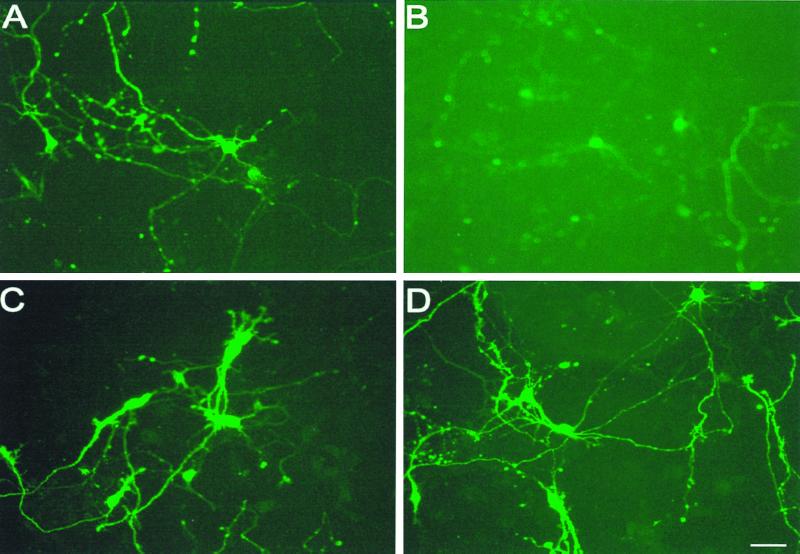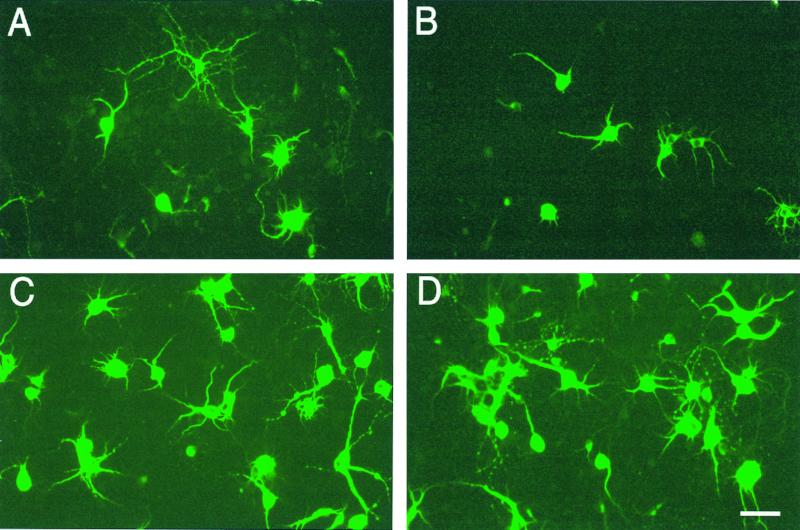MEDICAL SCIENCES. For the article “d-β-Hydroxybutyrate protects neurons in models of Alzheimer's and Parkinson's disease” by Yoshihiro Kashiwaya, Takao Takeshima, Nozomi Mori, Kenji Nakashima, Kieran Clarke, and Richard L. Veech, which appeared in number 10, May 9, 2000, of Proc. Natl. Acad. Sci. USA (97, 5440–5444), the authors note the following correction. Figs. 1 and 3 were transposed due to a printer's error. The corrected figures and their legends are shown below and on the opposite page.
Figure 1.
Anti-TH stain of day 7 of rat mesencephalic neuronal culture exposed to MPP+ and ketones for 2 days. (A) Control culture of anti-TH-stained mesencephalic neuronal cultures. (B) Cultures after addition of 5 μM MPP+, (C) after addition of MPP+ and 4 mM ketone bodies, and (D) after addition of 4 mM ketone bodies alone. Addition of 5 μM MPP+ to mesencephalic neuronal cultures resulted in a decrease in TH+ cells, a disappearance of neurites, and a shrinkage of cell body volume. Addition of 4 mM Na d-β-hydroxybutyrate to cultures containing 5 μM MPP+ reversed most of the effects of MPP+. The cell number and cell body volume did not differ significantly from control. (Scale bar = 20 μm.)
Figure 3.
The effects on cultured rat hippocampal cells of Aβ1–42, ketones, or the combination. (A) The 6-day control cultures of 18-day embryonic rat hippocampal tissue; (B) after 14 h exposure to 5 μM Aβ1–42, (C) after exposure to both Aβ1–42 and 4 mM d-β-hydroxybutyrate, and (D) the effects of ketone bodies alone. Addition of Aβ1–42 resulted in a decrease in neuronal number and number of neurites (B versus A). Addition of ketones to cells exposed to Aβ1–42 showed no decrease in neuron or neurite number, indicating that ketones act as neuroprotective agents against the toxicity of Aβ1–42 on cultured hippocampal neurons (C versus B).




